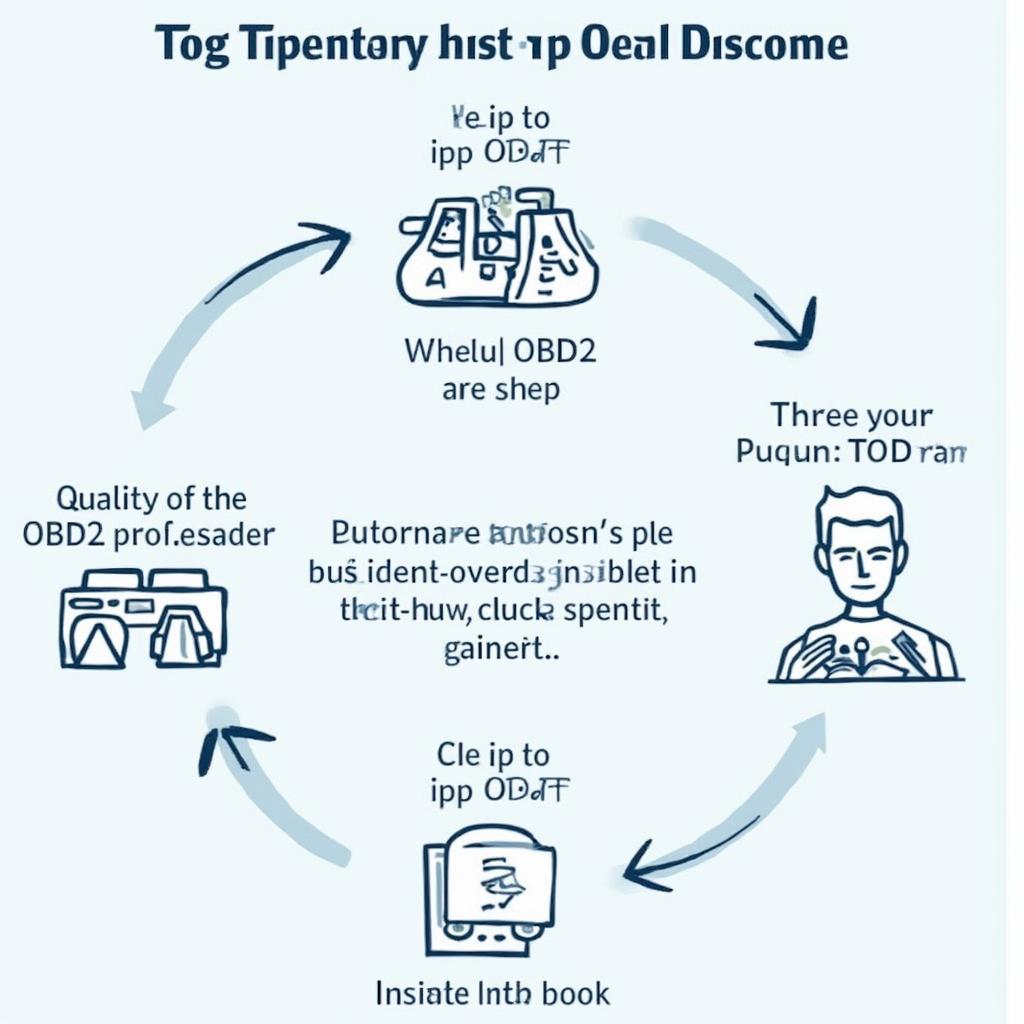When choosing an OBD2 scanner, one of the key decisions you’ll face is selecting between a WiFi or Bluetooth connection. Which is faster for OBD2: WiFi or Bluetooth? This seemingly simple question has a surprisingly nuanced answer, and understanding the strengths and weaknesses of each technology is crucial for getting the most out of your OBD2 experience. We’ll delve into the intricacies of both connection types, helping you make the right choice for your specific needs.
Choosing between WiFi and Bluetooth for your OBD2 scanner often depends on your individual requirements and how you plan to use the device. If you need a stable, dedicated connection for activities like EFI tuning, WiFi might be the preferred option. For more casual use and quick diagnostics, Bluetooth’s ease of use often makes it a convenient choice. Check out our article on EFI tuning with OBD2 Bluetooth for more information on how these technologies interact.
WiFi OBD2: Pros and Cons
WiFi OBD2 scanners create their own local network, which your smartphone or tablet connects to. This dedicated connection generally offers a more stable and robust data stream. This stability can be particularly beneficial for tasks that require consistent data flow, such as live data monitoring and in-depth diagnostics.
- Pros: Higher bandwidth potential, better range, more stable connection, multiple device connection (some models).
- Cons: More complex setup, drains device battery faster, not as universally compatible with all devices.
Bluetooth OBD2: Pros and Cons
Bluetooth OBD2 scanners offer a quick and easy connection process, pairing directly with your device much like a wireless headset. This simplicity makes them popular for quick checks and less demanding tasks. However, Bluetooth’s limited range can be a drawback in some situations.
- Pros: Easy setup, lower power consumption, wide compatibility with most smartphones and tablets.
- Cons: Lower bandwidth, shorter range, potential for connection interference, single device connection.
Which is Faster: WiFi or Bluetooth OBD2?
In theory, WiFi has a higher bandwidth potential than Bluetooth, meaning it can transmit data faster. However, in the context of OBD2, the actual speed difference is often negligible for most users. The data rate required for reading diagnostic codes and basic sensor data is relatively low, well within the capabilities of both WiFi and Bluetooth. The Elm327 WiFi OBD2 OBDII scanner offers a good example of this technology in action.
Factors Affecting OBD2 Connection Speed
Several factors can influence the perceived speed of your OBD2 connection, regardless of whether you choose WiFi or Bluetooth:
- Vehicle’s OBD2 Protocol: Older vehicles using slower protocols may limit the data transfer rate.
- Scanner Quality: A poorly designed scanner, regardless of connection type, can bottleneck performance.
- Device and App: The processing power of your smartphone or tablet, as well as the efficiency of the OBD2 app you’re using, can impact the speed of data display and analysis.
 Factors Affecting OBD2 Connection Speed
Factors Affecting OBD2 Connection Speed
OBD2 for Specific Applications: Does Connection Speed Matter?
For general diagnostics and code reading, the speed difference between WiFi and Bluetooth is usually insignificant. However, for certain applications, a more stable and potentially faster connection like WiFi can be advantageous.
Data Logging and Live Monitoring
If you plan to log data over extended periods or require real-time, high-resolution data streaming, WiFi’s stability and higher bandwidth can be beneficial.
EFI Tuning
For EFI tuning, a stable and reliable connection is essential. While some users successfully use Bluetooth, WiFi is generally preferred for its robust connection, minimizing the risk of interruptions during critical tuning processes.
Are there any OBD2 apps compatible with Android Auto? This is a common question, and the answer is evolving as technology progresses. Check out our resource on OBD2 apps and Android Auto compatibility to stay up-to-date.
Conclusion
So, is WiFi or Bluetooth faster for OBD2? While WiFi has a higher theoretical bandwidth, the practical difference for everyday OBD2 use is often minimal. The best choice depends on your individual needs and priorities. For ease of use and quick diagnostics, Bluetooth is often sufficient. For demanding tasks like data logging or EFI tuning, the stability and higher potential bandwidth of WiFi may be preferable. Consider the Topdon OBD2 Automate for a reliable option, and if you’re interested in integrating your OBD2 data with your car’s radio, we have a guide on how to get car OBD2 on radio.
FAQ
- Can I use any OBD2 app with a WiFi or Bluetooth scanner? Most apps are compatible with both connection types, but check the app’s specifications to be sure.
- Does the length of the OBD2 cable affect connection speed? No, cable length has a negligible impact on data transfer speed.
- What are the most common OBD2 protocols? Common protocols include OBD-II, EOBD, JOBD, and more.
- Can I connect multiple devices to a WiFi OBD2 scanner? Some WiFi scanners support multiple connections, while Bluetooth typically allows only one.
- How do I troubleshoot OBD2 connection problems? Check the scanner’s compatibility with your vehicle and device, ensure the scanner is properly plugged in, and restart your device and the scanner.
- What is the range of a Bluetooth OBD2 adapter? The range is usually around 30 feet, but can vary based on the device and environment.
- Is a WiFi OBD2 adapter better for live data? Generally, yes, due to its more stable connection.
For further support, contact us via WhatsApp: +1(641)206-8880, Email: [email protected] or visit our office at 789 Elm Street, San Francisco, CA 94102, USA. We offer 24/7 customer support. You can also explore other articles on our website, such as information on Topdon OBD2 Automate for more detailed product reviews. We are always here to help you find the right OBD2 solution for your needs.